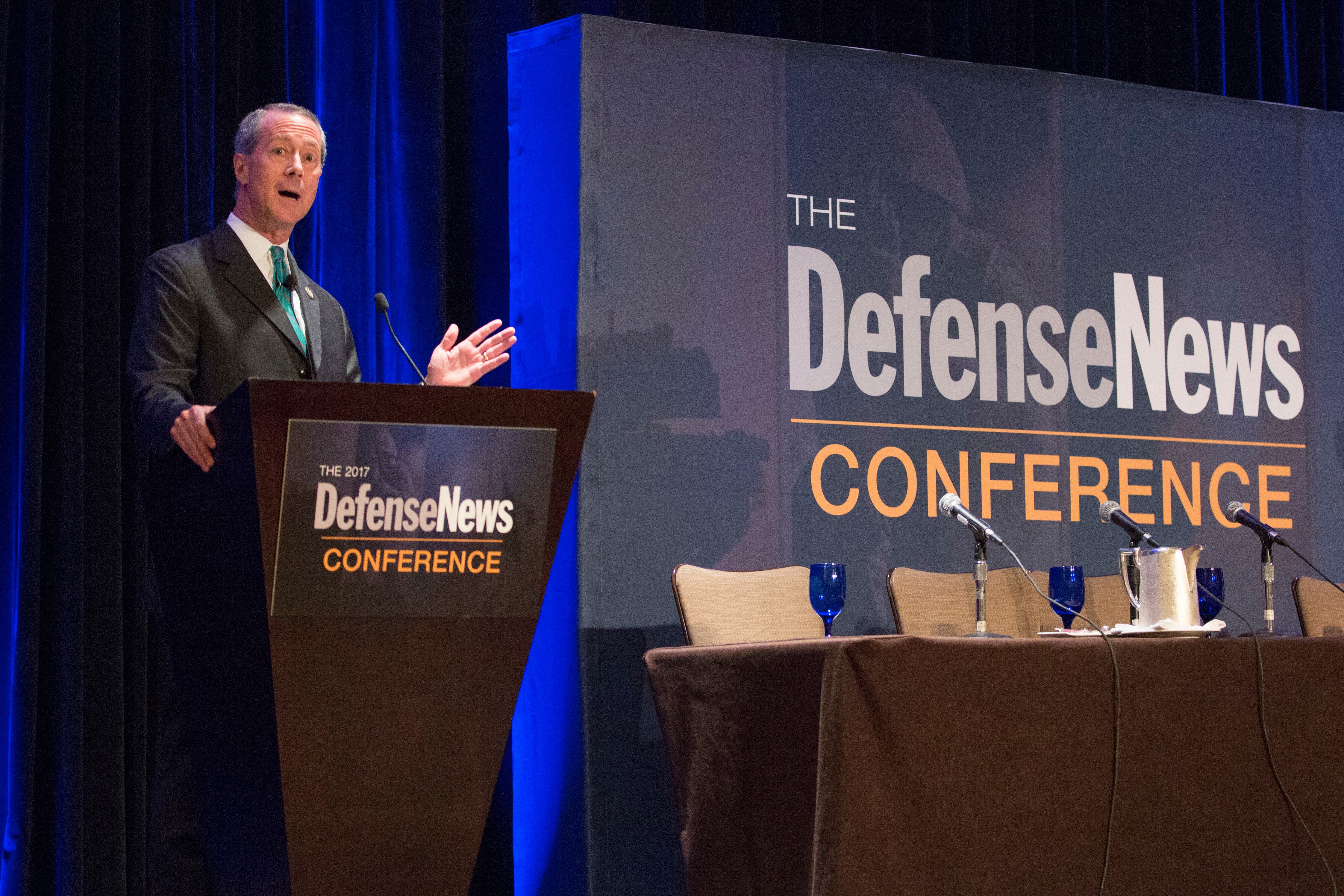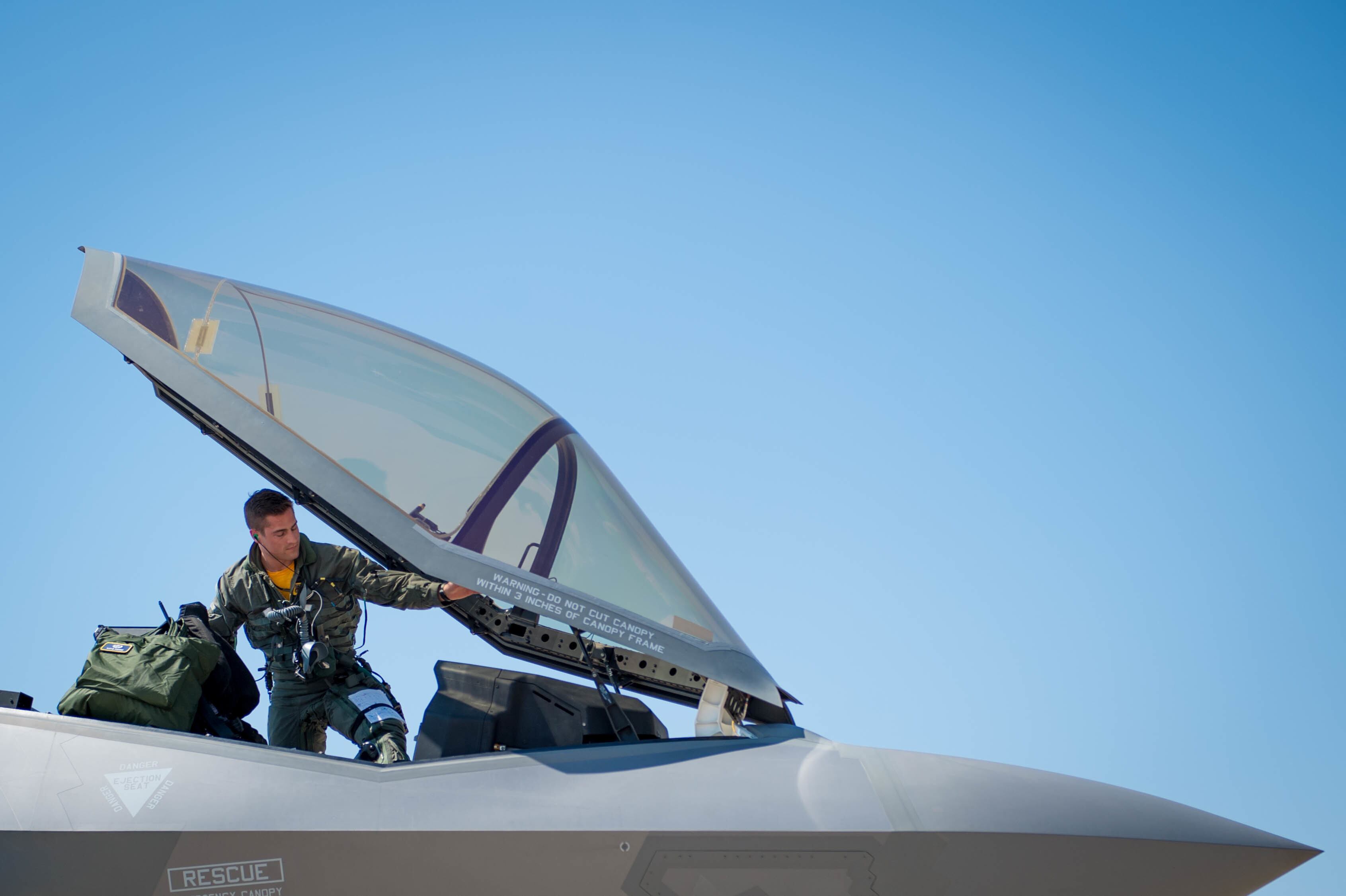WASHINGTON — While the F-35 program will move forward at pace even if funded through a continuing resolution, development and testing activities will slow down starting around April 2018 if a CR extends into spring, the head of the program office warned Wednesday.
“As we’ve done now for a decade or so, we’ve provided our CR funding profile to the service so that we can execute. Right now, based upon the current plan, we should see no major impact until the April time frame,” Vice Adm. Mat Winter, head of the F-35 joint program office, told reporters at the Defense News conference.
“Right now, it won’t look like anything different. We’ll be on track as we’re executing through December. In January, we’ll see where we are.”
[ Click here for more coverage and updates from the Defense News Conference. ]
Winter was one of many officials at the Defense News Conference who spoke about the potential impact of a CR. As the end of the fiscal year approaches on Sept. 30, Pentagon officials and congressional supporters of defense spending have exhorted the potentially chilling effects to weapons programs.
Earlier in the day, House Armed Services Committee Chairman Mac Thornberry said he expects that government agencies will be funded through CR until at least December.
“I think a CR is a mistake, and I regret very much we are in a position where it seems a CR is the best option,” he said during a keynote speech.
RELATED

A few hours later, Rep. Kay Granger, who leads the House Appropriations Committee’s defense subcommittee, agreed that Thornberry’s prediction is likely.
Continuing resolutions can affect weapons programs in several different ways. The most obvious and detrimental impact is that they prohibit the start of new programs. In an Aug. 31 interview with Defense News, U.S. Air Force Secretary Heather Wilson said the T-X contract, the service’s biggest upcoming sales opportunity, could be delayed as a result of a CR. The U.S. Air Force initially intended to award it by the end of the calendar year.
As an established program, the F-35 JPO would not be hit with that effect, Winter said.
However, a continuing resolution would hold funding at the same levels as the previous year, meaning programs like the F-35 will not be receiving as much money over the fiscal year as planned. The program office can move some of that funding around, allowing it to spend at the same rates it had planned for FY 2018 for a period of time.
RELATED

But around January, the program office will need to submit an anomaly, or a request for more funding above CR levels, if it wants to continue its activities at the same pace, Winter said.
Otherwise, “we will just see slowing down, not as many tests, not as much development. It would slow down versus stop,” he said.
Winter struck a reassuring tone during his comments with reporters, stressing that the JPO would take steps in order to ensure that progress continues on F-35 development.
[ Norquist warns of ’corrosive,’ wasteful multiple continuing resolutions ]
However, David Norquist, the Pentagon’s comptroller and chief financial officer, made the point during his speech that CRs have “administrative costs that are wasteful and readiness and operational costs that are unrecoverable.” However, he told Defense News in August that the Defense Department is ready to work under a CR, as a near-term budget deal looks increasingly unlikely.
Valerie Insinna is Defense News' air warfare reporter. She previously worked the Navy/congressional beats for Defense Daily, which followed almost three years as a staff writer for National Defense Magazine. Prior to that, she worked as an editorial assistant for the Tokyo Shimbun’s Washington bureau.








